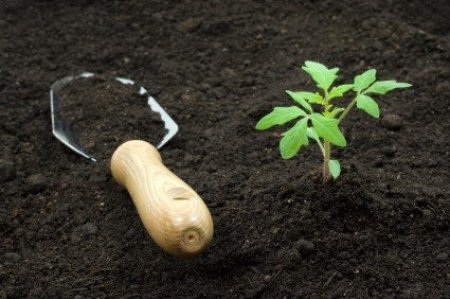
Gardeners hear a lot about soil pH. That's because it's incredibly important to your plants' health. The pH of soil affects the ability of plants to take up nutrients in the soil through their roots. If the soil is too acidic or too alkaline (basic) important nutrients like nitrogen, potassium, and phosphorus become less available to your plants.
The pH of a substance, such as soil, is a measure of how acidic or basic it is. The pH scale goes from 0 to 14. The halfway point, pH 7, is neutral. A pH value below 7 is acidic; a pH value above 7 is alkaline (basic). Most horticultural plants grow well in a pH range of about 6 to 7.
The pH of your soil determines the availability of nutrients to plant roots. Before a nutrient can be used by plants, it must first be dissolved in soil water. Most plant nutrients dissolve when the soil is slightly acidic. For example, minerals such as zinc, aluminum, copper, iron and manganese dissolve in soil water when the pH is slightly acidic. In small quantities, these minerals are beneficial.
When soil pH becomes too acidic, however, an overabundance of these dissolved minerals can damage, or even kill your plants. Other nutrients, including nitrogen, phosphorus, and potassium, also become "locked-up" and less available to the plants.
When soil pH becomes too alkaline (exceeds 7.5), the availability of minerals like iron, manganese, and phosphorus is greatly reduced.
All plants have different preferences when it comes to pH. And while most plants tolerate a fairly wide range of soil pH, there are a few "finicky" plants that prefer a soil pH of 4.5 to 5.5. These "acid-loving" plants include azaleas, rhododendrons, and blueberries.
There are also plants that grow well in more alkaline soil. For example, clematis and delphiniums prefer a soil pH from neutral to slightly alkaline (7.0 to 8.0). None of these plants are really picky, they are just quick to express their need for "locked up" nutrients when the pH of the soil is out of whack.
Soil pH also has an important impact on your lawn. Most turf grasses prefer soils that are slightly acidic with a pH range of 6.0-6.5. When soil pH drops below 5.5 or rises above 8.5, most nutrients (fertilizers) that you apply become less available to turf. Soil pH also affects the activity of beneficial soil microbes, which work to breakdown thatch and toxic compounds like pesticides, and improve the overall health of the root zone.
Does your lawn or garden seem to favor particular types of weeds? Certain weeds can act as indicators of your soil's pH. For example, sorrels, docks, dandelions, and Queen-Anne's lace typically grow in poor, acidic soils. On the alkaline side of the pH scale, mustards and thistles tend to grow in soils with a higher pH. Changing the pH can actually help reduce the incidence of certain types of weeds.
The pH of your soil can be changed by adding amendments to the soil to make it more or less acidic. For example, you can add lime or wood ash to acidic soils to make them more alkaline, and you can add sulfur or peat moss to alkaline soils to make them more acidic. How fast you can correct soil pH depends on the type of amendment you use, and how much you need to alter it.
One way to get around changing the pH of your soil is to simply work with what you have. When choosing landscape plants, take your soil's pH into account. Consider growing "picky" plants in containers or raised beds where you can more easily control pH levels.
Raises pH
lime (the finer it's ground the faster it works)
wood ashes
Lowers pH
sulfur
aluminum sulphate
To know your soil's pH, you can either send samples of your soil off to a lab (ask your county extension agency for details), or you can buy a home pH test kit. Having your soil tested and evaluated by a laboratory costs about $15-$20.
Depending on how busy the lab is, the results will be returned to you in 2 to 3 weeks along with specific recommendations for any necessary changes.

About The Author: Ellen Brown is an environmental writer and photographer and the owner of Sustainable Media, an environmental media company that specializes in helping businesses and organizations promote eco-friendly products and services. Contact her on the web at http://www.sustainable-media.com
Add your voice! Click below to comment. ThriftyFun is powered by your wisdom!
Very good and interesting article. I wonder if this applies to the human body as well, regarding alkalinity and acidity and the minerals not being absorbed as well. I do lots of reading, I will look this up.
Thank you for this information!
Blessings, Robyn
Hey Robyn,
There is a lot of information on pH for humans. Hopefully our medical community will get the word.
Add your voice! Click below to comment. ThriftyFun is powered by your wisdom!